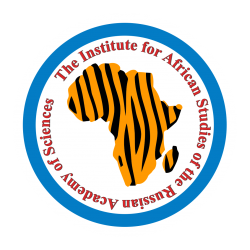Author:
Abstract:
At present, about half of the total amount of fish and seafood consumed in the world is grown in artificial conditions, while in the early 2000s its share was 30%, and in the 1980s it did not exceed 7%. This trend is formed against the background of depletion of natural marine and freshwater bio-reserves. Overexploitation of some of their species, primarily fish, has actually reached the verge of sustainable reproduction or even exceeds this objective limit beyond which no production is possible without compromising the ecological state of the aquatic biological environment. At the same time, the population’s demand for products containing the most suitable balance of proteins, “right” fats, vitamins and amino acids is increasing more and more. One of their main sources is water bio-reserves.
The shortage of these resources as a result of excessive demand (in the context of the actualization of the problem of preserving natural capital for future generations) is increasingly compensated by an increase in the supply of aquaculture products – that is, man-controlled artificial reproduction of commercial water reserves.
Compared to other types of food, global aquaculture production is increasing at a faster rate of 10% per year. It is expected to exceed 100 million tons by 2030, compared to 82 million tons in 2018. The highest indicator, which is 48%, is estimated for Africa, which is no less affected by the growing deficit of natural water bioresources than other countries of the world. In addition, it exacerbates the still unresolved problems of food security in the countries of the continent and the lack of adequate nutrition of its population, especially its poorest strata, who are constantly experiencing protein and vitamin starvation.
In many ways, this is why it is difficult to overestimate the importance of aquaculture for the African continent, although so far its share in global production is only 2.7%. This may indicate, in particular, a lack of attention to the industry by the leadership of a very large number of African states, which are still only at the beginning of the road. Among them was Kenya, which is currently in the middle of the list of top ten African countries that in recent years, according to the FAO, have made rather noticeable positive changes in this area of economic activity.
The article discusses the main stages of development of various areas of aquaculture in Kenya. The main attention is paid to the state policy on turning this agricultural sub-sector into an important resource for increasing employment and well-being of the population in rural areas.
Keywords:
Fish Farming Enterprise Productivity Project, Aquaculture Business Development Programme, aquaculture, fish farming, Project on Entrepreneurial productivity of Fish Farming, Program for the Development of Entrepreneurial Aquaculture, state subsidies, food deficit, employment, Lake Victoria, mariculture.
DOI:
10.31132/2412-5717-2021-54-1-108-120
References:
1. A Brief on Fish Cage Farming in Lake Victoria, Kenya as Guidance on Decision Making for Policy Direction. KMFRI. 17 Sept. 2020. https://www.kmfri.co.ke/images/pdf/KMFRI-GUIDANCE-ON-FISH-CAGE-FARMING-IN-LAKE-VICTORIA_17-09-2020.pdf (accessed 22.10.2020)
2. Aquaculture in Africa: A Comparative Review of Egypt, Nigeria, and Uganda Vis-À-Vis South Africa https://www.tandfonline.com/doi/full/10.1080/23308249.2020.1795615 (accessed 21.10.2020)
3. Aquaculture Needs Assessment. Mission Report. Nairobi, 2020. Fao.org/3/az041e.pdf (accessed 22.10.2020)
4. Aquaculture Business Development Programme. 29 August 2017. https://webapps.ifad.org/ members/eb/122/docs/EB-2017-122-R-10-Project-Design-Report.pdf (accessed 21.10.2020)
5. Agricultural Sector Transformation and Growth Strategy 2019–2029. kilimo.go.ke (accessed 21.10.2020)
6. Aquaculture Business Development Programme. 29 August 2017. https://webapps.ifad.org/ members/eb/122/docs/EB-2017-122-R-10-Project-Design-Report.pdf (accessed 21.10.2020)
7. Business Opportunity for Aquaculture in Kenya. Wageningen, 2011. (accessed 21.10.2020)
